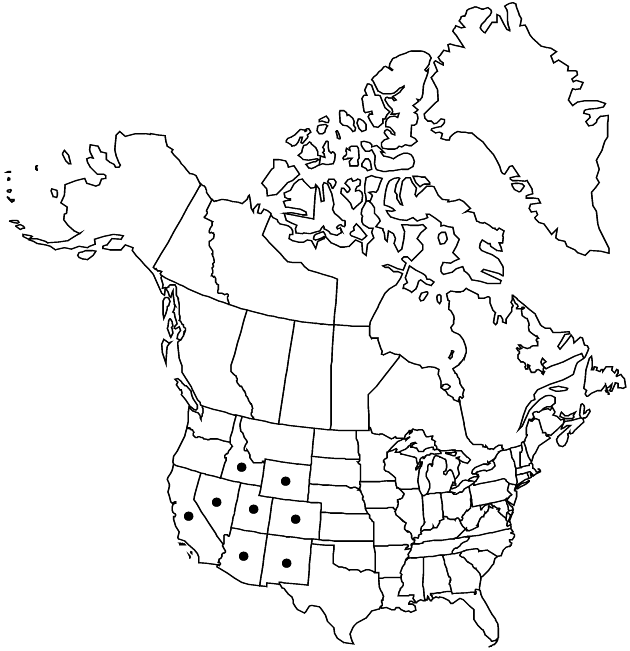Packera werneriifolia
Phytologia 49: 48. 1981.
Perennials, 7–15+ cm; ± rhizomatous (rhizomes branched, sometimes densely crowded). Stems 1 or 3–5, clustered (often scapiform), usually floccose, lanate-tomentose, or canescent, sometimes glabrate. Basal leaves (either of two forms): usually (1) sessile, sometimes petiolate; blades narrowly lanceolate to elliptic, 15–40+ × 5–25 mm, bases tapering, margins entire or dentate toward apices (often revolute), sometimes (2) petiolate; blades ovate to orbiculate, 10–20 × 5–15 mm, bases tapering to abruptly contracted, margins entire or wavy, sometimes dentate toward apices. Cauline leaves abruptly reduced (bractlike). Heads 1–5(–8) in cymiform to subumbelliform arrays. Peduncles inconspicuously bracteate, glabrous or densely hairy. Calyculi conspicuous (bractlets often cyanic). Phyllaries 13 or 21, green (tips sometimes cyanic), 4–10 mm, glabrous or hairy. Ray florets 0, 8, or 13; corolla laminae 5–10 mm. Disc florets 30–50+; corolla tubes 2.5–3.5 mm, limbs 3–4 mm. Cypselae 1.5–2 mm, glabrous; pappi 5–6 mm. 2n = 44, 46.
Phenology: Flowering mid Jun–mid Aug.
Habitat: Rocky talus slopes, sandy soils in forest openings near or above timberline
Elevation: 2400–3700 m
Distribution

Ariz., Calif., Colo., Idaho, Nev., N.Mex., Utah, Wyo.
Discussion
Packera werneriifolia is morphologically variable; it occurs throughout the central Rockies and, sporadically, as far west as the Sierra Nevada. Leaf morphology varies from ovate, elliptic, or narrowly elliptic in the Rockies to narrow with revolute margins in California and Arizona. All specimens are characteristically scapiform.
Selected References
None.